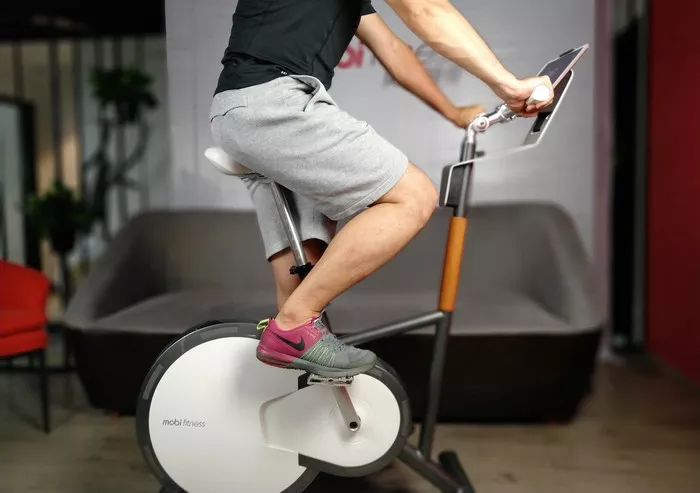Knee injuries and surgeries can be debilitating, often requiring extensive rehabilitation to regain strength, mobility, and function. Among the various tools and techniques used in knee rehab, stationary bikes are widely recognized for their effectiveness in improving range of motion, reducing pain, and building muscle strength. However, not all stationary bikes are created equal, and selecting the best stationary bike for knee rehab requires careful consideration of several factors. In this comprehensive guide, we will explore the key features to look for when choosing a stationary bike for knee rehabilitation and review some of the top options available on the market.
Benefits of Using a Stationary Bike for Knee Rehab
Before diving into the specifics of choosing the best stationary bike for knee rehab, let’s first examine why stationary bikes are a popular choice among physical therapists and patients alike:
Low-impact exercise: Stationary biking provides a low-impact cardiovascular workout that is gentle on the knees, making it ideal for individuals recovering from knee injuries or surgeries.
Range of motion: Cycling on a stationary bike helps improve joint flexibility and range of motion in the knees, promoting faster recovery and reducing the risk of stiffness.
Muscle strengthening: Pedaling against resistance helps strengthen the muscles surrounding the knee joint, including the quadriceps, hamstrings, and calves, which are crucial for stability and support.
Gradual progression: Stationary bikes offer adjustable resistance levels, allowing users to start at a comfortable intensity and gradually increase the challenge as their strength and endurance improve.
Monitoring progress: Many stationary bikes come equipped with digital displays that track metrics such as distance, time, speed, and calories burned, enabling users to monitor their progress and set achievable goals.
Key Features to Consider
When selecting a stationary bike for knee rehab, it’s essential to consider the following key features:
Adjustability: Look for a bike with adjustable seat height and handlebar positions to ensure proper alignment and comfort during workouts. The ability to customize the bike to fit your body proportions is crucial for maintaining proper form and minimizing strain on the knees.
Resistance Levels: Opt for a bike with multiple resistance levels that can be easily adjusted to accommodate varying levels of strength and fitness. Start with lower resistance settings and gradually increase as your knee rehabilitation progresses.
Pedal Design: Choose a bike with pedals that have adjustable straps or cages to secure your feet in place during cycling. This helps prevent slippage and ensures a smooth, efficient pedaling motion without putting excessive strain on the knees.
Comfort: Consider features such as padded seats, ergonomic handlebars, and smooth, quiet operation for optimal comfort during extended workouts. Look for bikes with adjustable seat cushions and ergonomic handlebar grips to reduce discomfort and fatigue.
Stability: Ensure that the stationary bike is sturdy and stable, with a robust frame and wide base for support. A wobbly or flimsy bike can compromise safety and increase the risk of falls or injuries, especially for individuals with knee issues.
Safety Features: Look for bikes with safety features such as a secure locking mechanism for the pedals, adjustable stabilizing feet, and a low step-through design for easy mounting and dismounting. These features help minimize the risk of accidents and injuries during use.
Console Features: Consider whether you prefer a stationary bike with basic or advanced console features, such as built-in workout programs, heart rate monitoring, and Bluetooth connectivity for tracking progress and syncing with fitness apps.
Top Stationary Bikes for Knee Rehab
Now that we’ve covered the essential features to look for in a stationary bike for knee rehab, let’s explore some of the top options available on the market:
Schwinn 270 Recumbent Bike: The Schwinn 270 is a popular choice for knee rehab due to its comfortable recumbent design, adjustable seat, and 25 levels of resistance. It features a dual-track LCD console with 29 workout programs, including heart rate control, and Bluetooth connectivity for data tracking.
NordicTrack Commercial S22i Studio Cycle: The NordicTrack S22i is a high-end stationary bike with interactive coaching and immersive workout experiences. It offers 24 levels of digital resistance, automatic incline and decline adjustments, and a 22-inch HD touchscreen display for streaming on-demand workouts.
Marcy Magnetic Recumbent Exercise Bike: The Marcy recumbent bike is a budget-friendly option that offers a smooth, quiet ride and eight levels of magnetic resistance. It features an adjustable seat and handlebars, easy-to-read LCD console, and pulse sensors for monitoring heart rate.
Peloton Bike+: The Peloton Bike+ is a premium indoor cycling bike with a sleek design and advanced features. It features a rotating 23.8-inch HD touchscreen display, automatic resistance adjustments, and access to live and on-demand classes led by world-class instructors.
Sunny Health & Fitness SF-B1002 Belt Drive Indoor Cycling Bike: The Sunny Health & Fitness SF-B1002 is a durable and affordable option for knee rehab. It features a heavy-duty steel frame, adjustable resistance, and a smooth belt drive system for quiet operation. The bike also comes with a fully adjustable seat and handlebars for a customized fit.
Conclusion: Finding the Right Stationary Bike for Your Knee Rehab
Choosing the best stationary bike for knee rehab requires careful consideration of factors such as adjustability, resistance levels, comfort, stability, and safety features. By selecting a bike that meets your specific needs and preferences, you can maximize the effectiveness of your knee rehabilitation program and achieve better outcomes in terms of strength, mobility, and overall function. Whether you opt for a recumbent bike for added comfort or a high-tech interactive bike for immersive workouts, investing in a quality stationary bike can make a significant difference in your recovery journey. So, take your time to research and compare different options before making a decision, and remember to consult with your healthcare provider or physical therapist for personalized recommendations based on your individual condition and fitness goals.
[inline_related_posts title=”You Might Be Interested In” title_align=”left” style=”list” number=”6″ align=”none” ids=”7342,7339,7271″ by=”categories” orderby=”rand” order=”DESC” hide_thumb=”no” thumb_right=”no” views=”no” date=”yes” grid_columns=”2″ post_type=”” tax=””]
































